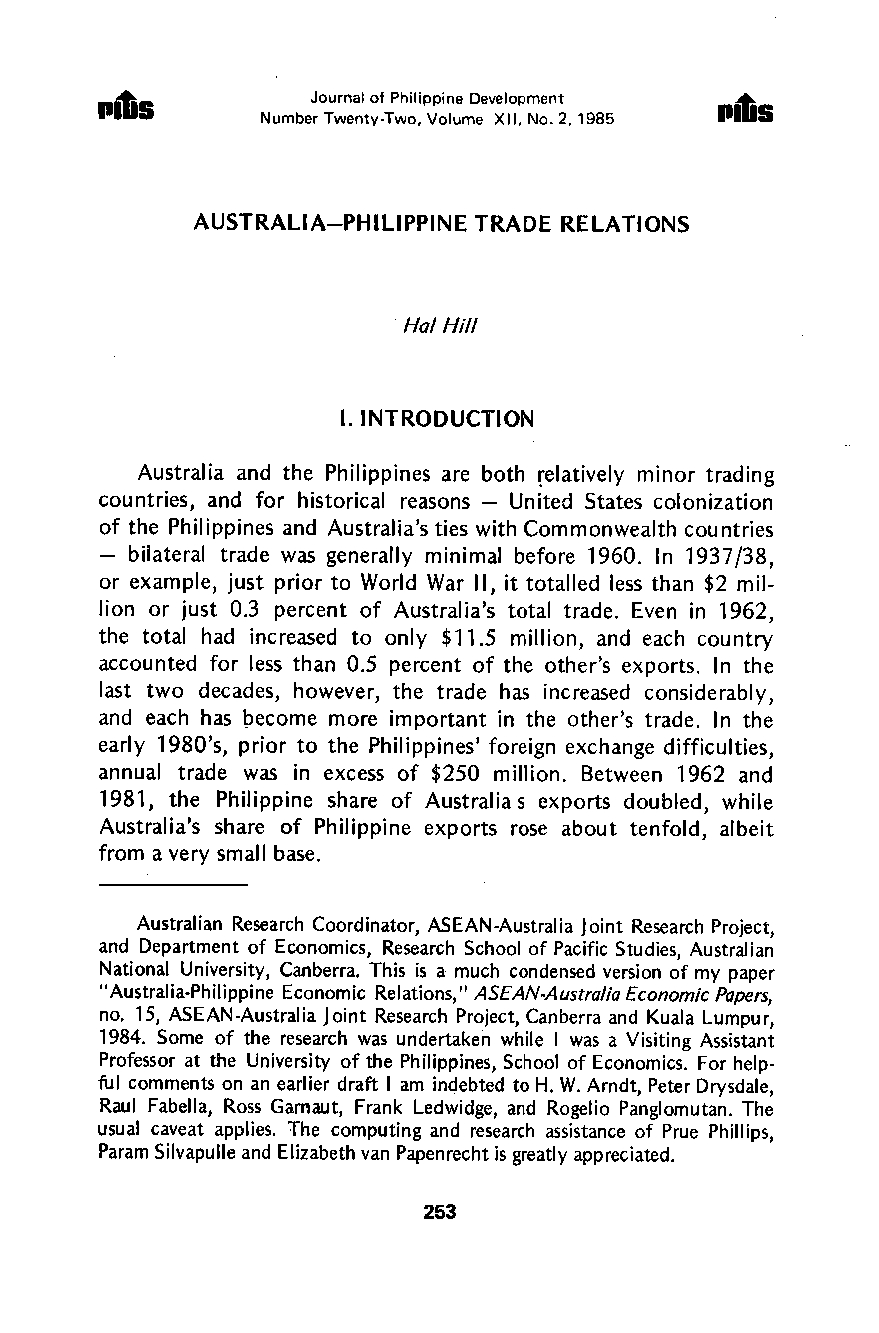Abstract
This article examines the pattern, composition and trends in Australia-Philippine trade from 1962-1981. Analysis points to three major results: the growth of bilateral trade despite both countries’ reduced importance in international trade, trade characterized by high levels of country bias and the plausible expectation of modest growth given the restoration of foreign exchange reserves to its normal level.
Citations
- Aldaba, Fernando T.. 2002. Philippine development: A research journey through the Philippine Journal of Development. Philippine Journal of Development PJD, 29. Philippine Institute for Development Studies.
- Shinyekwa, Isaac and Othieno Lawrence. 2013. Comparing the performance of Uganda’s Intra-East African community trade and other trading blocs: A gravity model analysis. Research Series 159667. Economic Policy Research Centre (EPRC).
- Khadan, Jeetendra and Roger Hosein. 2013. New empirical insights into the “natural trading partner” hypothesis for Caricom countries. MPRA Paper 50493. University Library of Munich, Germany.
- Shinyekwa, Isaac and Lawrence Othieno. 2013. Comparing the performance of Uganda’s Intra-East African community trade and other trading blocs: A gravity model analysis. Research Series 150227. Economic Policy Research Centre (EPRC).
Full Issue
SHARE
